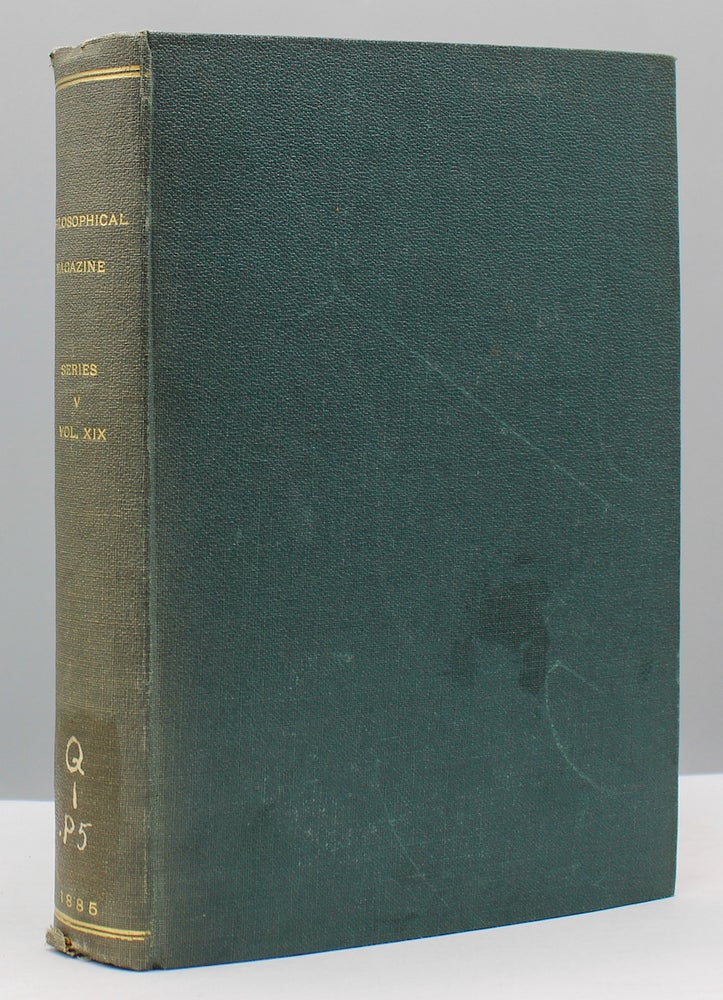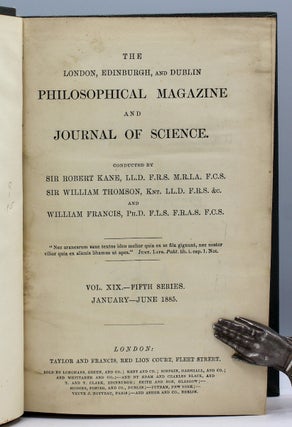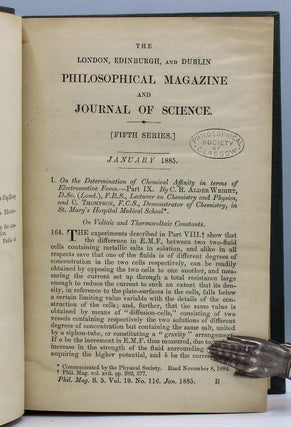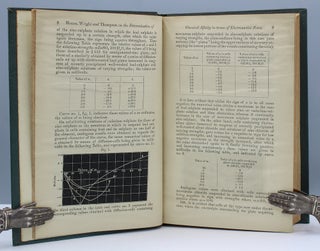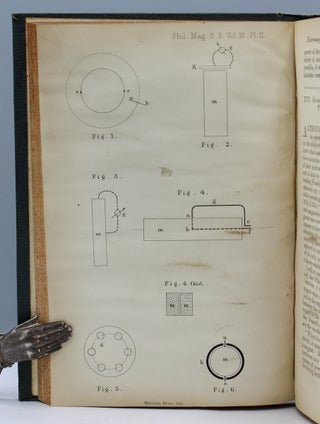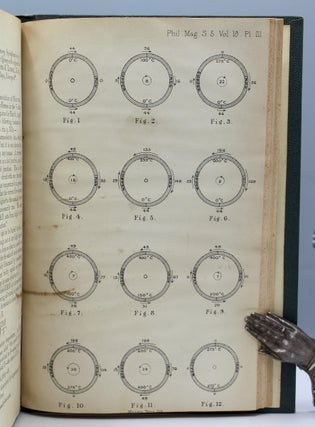“The Logical Spectrum.” In Philosophical Magazine, Volume 19, 1885, p. 286.
Library stamps and bookplates. Otherwise very good. Complete volume, in green cloth. Item #10907
In the years following Venn’s announcement of his diagrams (Philosophical Magazine, 1880) it became clear that, although they offer graphical vividness, the diagrams suffer from an inherent limitation; at most five variables can be represented by intersecting continuous regions. One of the earliest attempts to overcome this limitation was that of Alexander Macfarlane, a professor of physics at the University of Texas, who invented what today is called a “logic tree” or “decision tree.” His tree, called “logical spectrum” allows a systematic way of enumerating all logical possibilities for any number of variables. “The system was first explained in an article titled ‘The Logical Spectrum,’ Philosophical Magazine, Volume 19, 1885, p. 182. Five years later, Macfarlane showed how easily his diagram solved an involved problem posed by Boole on p. 146 of his Laws of Thought” (Martin Gardner, Logic Machines and Diagrams, p. 45). Today logic trees are used in almost every data-processing application, e.g., database management, address decoding, game playing, automated theorem proving, and computer vision.
Price: $950.00



